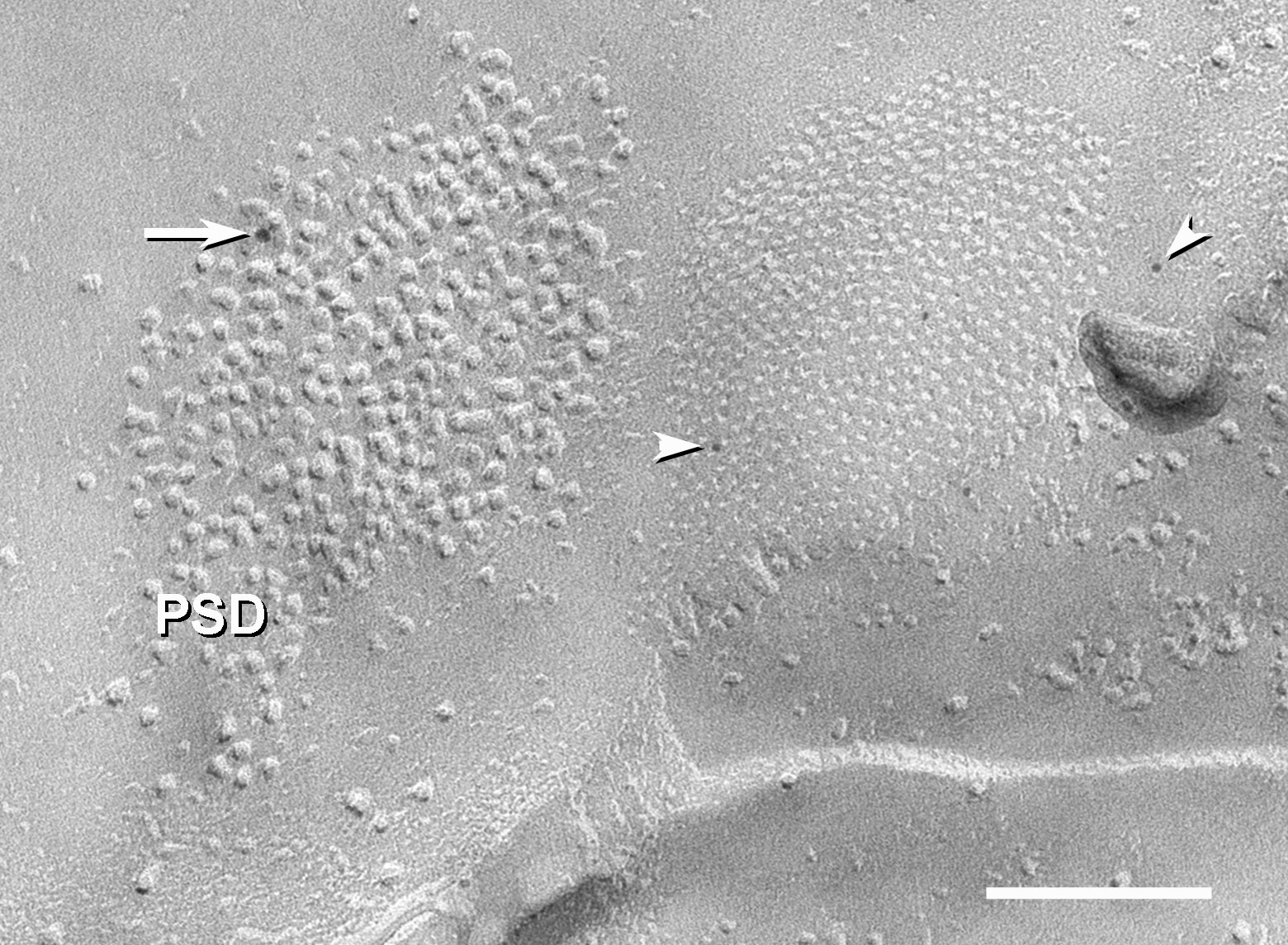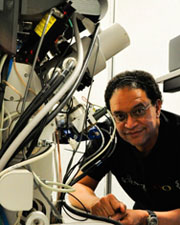Research Overview—
Dr. Rosa-Molinar and his group apply to multi-scale multi-modal correlated volume resin microscopies a systems engineering process concept known as “imaging chain” that includes determining provenance, searching, mining, processing, analyzing, displaying, storing, and managing datasets. The imaging chain enables the group to develop, refine, and use imaging tools and reagents to create image data sets required to research and unravel synapses’ three-dimensional (3-D) nano-scale geometry and molecular diversity.
To this end, Dr. Rosa-Molinar and his group are patenting and developing reagents and technology for multi-scale multi-modal correlated volume resin microscopic imaging of the central nervous system using photon-based and electron-based imaging technologies. They image and study the 3-D nano-scale geometry and molecular diversity of a poorly studied synapse that combines the features of both a chemical synapse and an electrical synapse, a connexin-based gap junction channel made of two hemichannels or connexons, one at each side of apposed membranes, known as a “mixed synapse”, to achieve his long-term research goal of elucidating the functional foundations of niche specialization of connexin, gap junction proteins, in electrical synapses and to elucidate the impact of use of different connexins in specialized niches within neural “microcircuits", a specific pattern of connectivity between neurons within a specific region of the central nervous system.
Research Interests
He and his group’s research interest is in the emerging field of neurotechnology, specifically developing/refining reagents, tools, and workflows for multi-scale multi-modal correlated volume resin microscopies required to determine the three-dimensional nano-scale geometry and molecular diversity of synapses. They are particularly interested in electrical synapses (e.g., gap junctions), specifically “mixed synapses,” a poorly studied synapse that combines the features of both chemical and electrical synapses.

Lab Members —
Graduate Students - Neuroscience Program
Former Members
| Name | Title | Post KU |
|---|---|---|
| Aidyn Medina-Lopez | Graduate Student | Lead Applications Scientist, Ronawk, Inc., Olathe, KS |
|
Joe Farthing |
Graduate Student | CritiTech Particle Engineering Solutions, Lawrence, KS |
| Noraida Martinez-Rivera, Ph.D. | Postdoctoral Researcher | Correlative Light and Electron Microscopist in the KU Microscopy and Analytical Imaging Research Resource Core Lab |
| Natasha Roman-Ortiz | Assistant Researcher Post-Baccalaureate Research Education Program (PREP) Fellow |
Ph.D. student, University of Minnesota |
| Carolina Santiago-Robles | Assistant Researcher Post-Baccalaureate Research Education Program (PREP) Fellow |
Ph.D. student, Columbia University |
| Heather Shinogle-Decker | Graduate Student Neuroscience/MAI Laboratory Research Director |
Ronawk LLC, Olathe, KS |

